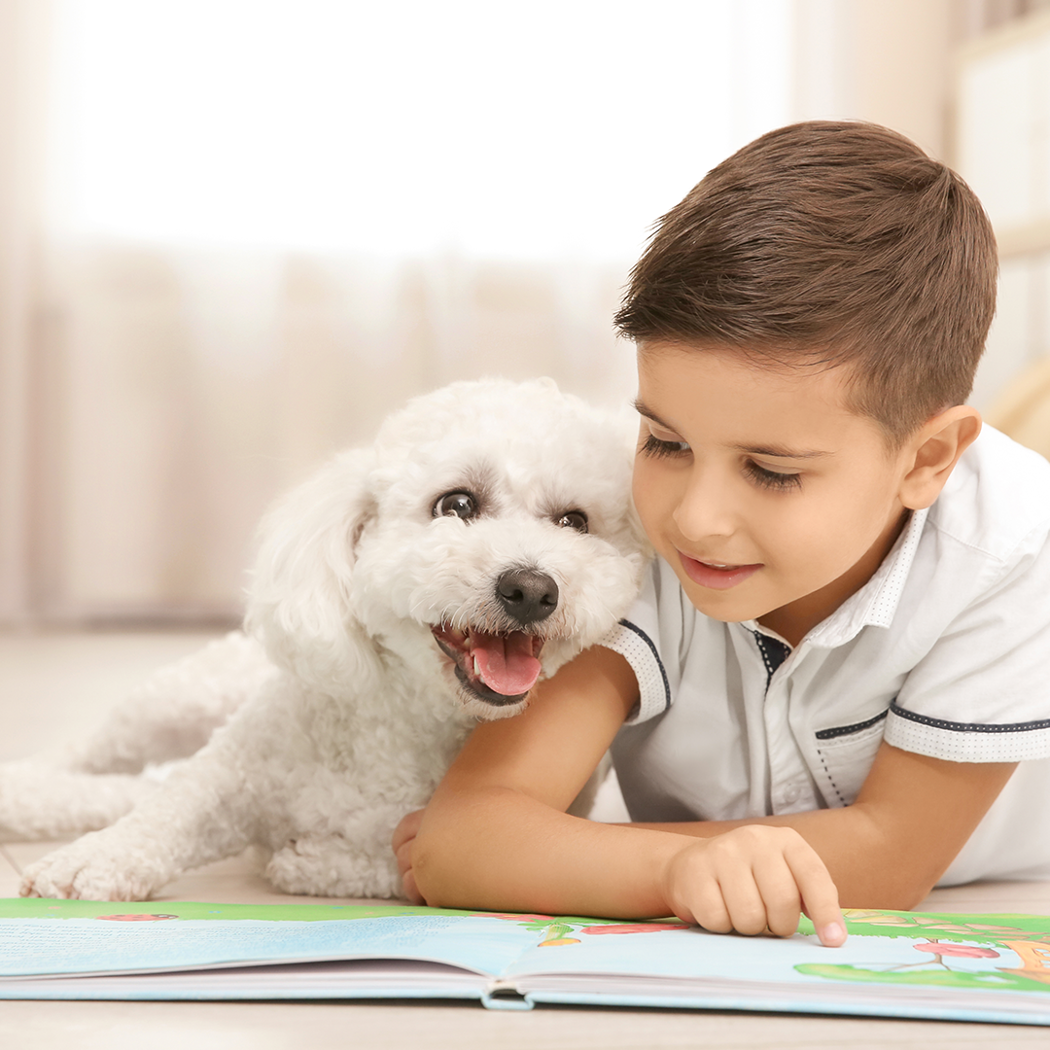Children and Pets
- Dog

Source of relaxation
Many studies show that having a pet reduces symptoms of stress and anxiety in children. It is relaxing for them to be around a dog, cat or any other animal that they like.
Why? The answer is not clear. However, it may be because of the simplicity of the relationship between a child and their pet has a soothing effect. Unlike humans, who can be complex and exhausting to understand, animals produce very few signs for children to interpret. As a result, children’s concentration, observation and peace of mind are improved.
Children quickly learn that a calm animal means a safe and stress-free environment and therefore being around a calm animal can be very reassuring and soothing for children.
Social facilitator
Pets are great icebreakers and they smooth out social interactions. If your child has a hard time connecting with other people, having a pet around may help them make friends. At the very least, a furry friend will spur interactions with others.
For children who are shy or quiet, asking them about their pets may help them open up and be more talkative than usual.
Attachment
The bond between children and their pets is truly special. They connect through emotion and an understanding of the other’s need rather than simply just words. Being able to meet the needs of another living being gives children a sense of pride and develops their empathy.
Boost for child development
A pet can have a positive impact on your child’s development. Even a baby can be influenced by having an animal around! Toddlers’ motor skills can be stimulated when the child follows a dog or cat. Calling and talking to the pet may also help stimulate and develop children’s language abilities.
Your child may see their pet as a listener with whom they can share their worries, problems and happy moments. Pets are also great playmates when no one else is around to play with.
The death or illness of a pet may also lead to important family discussions. An animal who falls ill or needs to be hospitalized provides an opportunity to broach this difficult subject with your child. This can be a valuable lesson about taking good care of our loved ones. The death of a goldfish, dog, cat or any other pet will be a sad event in your household, but it will allow you to discuss death—a subject that can otherwise be very abstract for kids. It is important for your child’s grieving process to hold a ceremony for their pet, showing your child that you recognize the value of their feelings toward their departed furry friend.
A smooth adoption
Though we now know just how beneficial the presence of a pet is for children, we still need to make sure that everything goes smoothly when a new pet becomes a part of the family. Here are some tips:
- The pet must be treated with respect. Teach your child to handle their animal gently, not to disturb a dog or cat that is eating or sleeping and to not remove a toy from their mouth.
- Not matter how gentle and affectionate your pet is, it will react when treated in a way it does not like. To avoid this situation, do not leave young children alone with a pet.
- Expose dogs and cats to different types of situations – noisy places or being pet – from an early age to get them used to living in an environment where there are children.
- Dogs need daily exercise. Encourage your child to walk the dog.
- Teach your kids how to play nicely with their pet so that no one gets hurt.
Now that you know the basics, are you ready to adopt a pet?